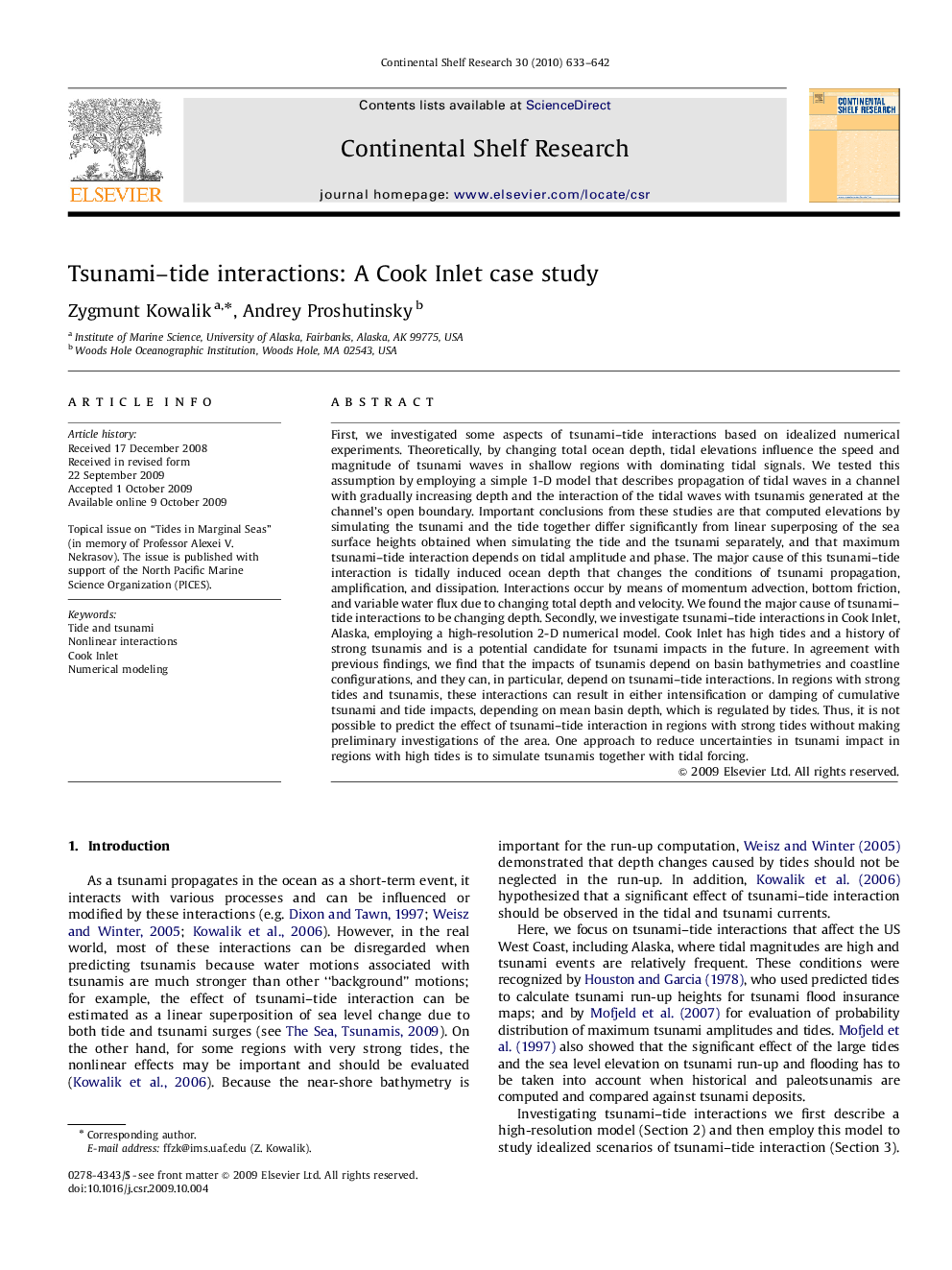| کد مقاله | کد نشریه | سال انتشار | مقاله انگلیسی | نسخه تمام متن |
|---|---|---|---|---|
| 4532958 | 1325159 | 2010 | 10 صفحه PDF | دانلود رایگان |

First, we investigated some aspects of tsunami–tide interactions based on idealized numerical experiments. Theoretically, by changing total ocean depth, tidal elevations influence the speed and magnitude of tsunami waves in shallow regions with dominating tidal signals. We tested this assumption by employing a simple 1-D model that describes propagation of tidal waves in a channel with gradually increasing depth and the interaction of the tidal waves with tsunamis generated at the channel's open boundary. Important conclusions from these studies are that computed elevations by simulating the tsunami and the tide together differ significantly from linear superposing of the sea surface heights obtained when simulating the tide and the tsunami separately, and that maximum tsunami–tide interaction depends on tidal amplitude and phase. The major cause of this tsunami–tide interaction is tidally induced ocean depth that changes the conditions of tsunami propagation, amplification, and dissipation. Interactions occur by means of momentum advection, bottom friction, and variable water flux due to changing total depth and velocity. We found the major cause of tsunami–tide interactions to be changing depth. Secondly, we investigate tsunami–tide interactions in Cook Inlet, Alaska, employing a high-resolution 2-D numerical model. Cook Inlet has high tides and a history of strong tsunamis and is a potential candidate for tsunami impacts in the future. In agreement with previous findings, we find that the impacts of tsunamis depend on basin bathymetries and coastline configurations, and they can, in particular, depend on tsunami–tide interactions. In regions with strong tides and tsunamis, these interactions can result in either intensification or damping of cumulative tsunami and tide impacts, depending on mean basin depth, which is regulated by tides. Thus, it is not possible to predict the effect of tsunami–tide interaction in regions with strong tides without making preliminary investigations of the area. One approach to reduce uncertainties in tsunami impact in regions with high tides is to simulate tsunamis together with tidal forcing.
Journal: Continental Shelf Research - Volume 30, Issue 6, 1 April 2010, Pages 633–642